

Plate 1 Hon. Mrs. Mary Graham. The Honourable Mrs Graham by Thomas Gainsborough. Acc. No. NG 332. Credit Bequest of Robert Graham of Redgorton 1859. © The National Gallery, Scotland.

Plate 2 Day Dress worn by Hon. Mrs. Graham, c.1790–1792 (Private Collection). Reproduced with the kind permission of Claudia and Robert Maxton-Graham.
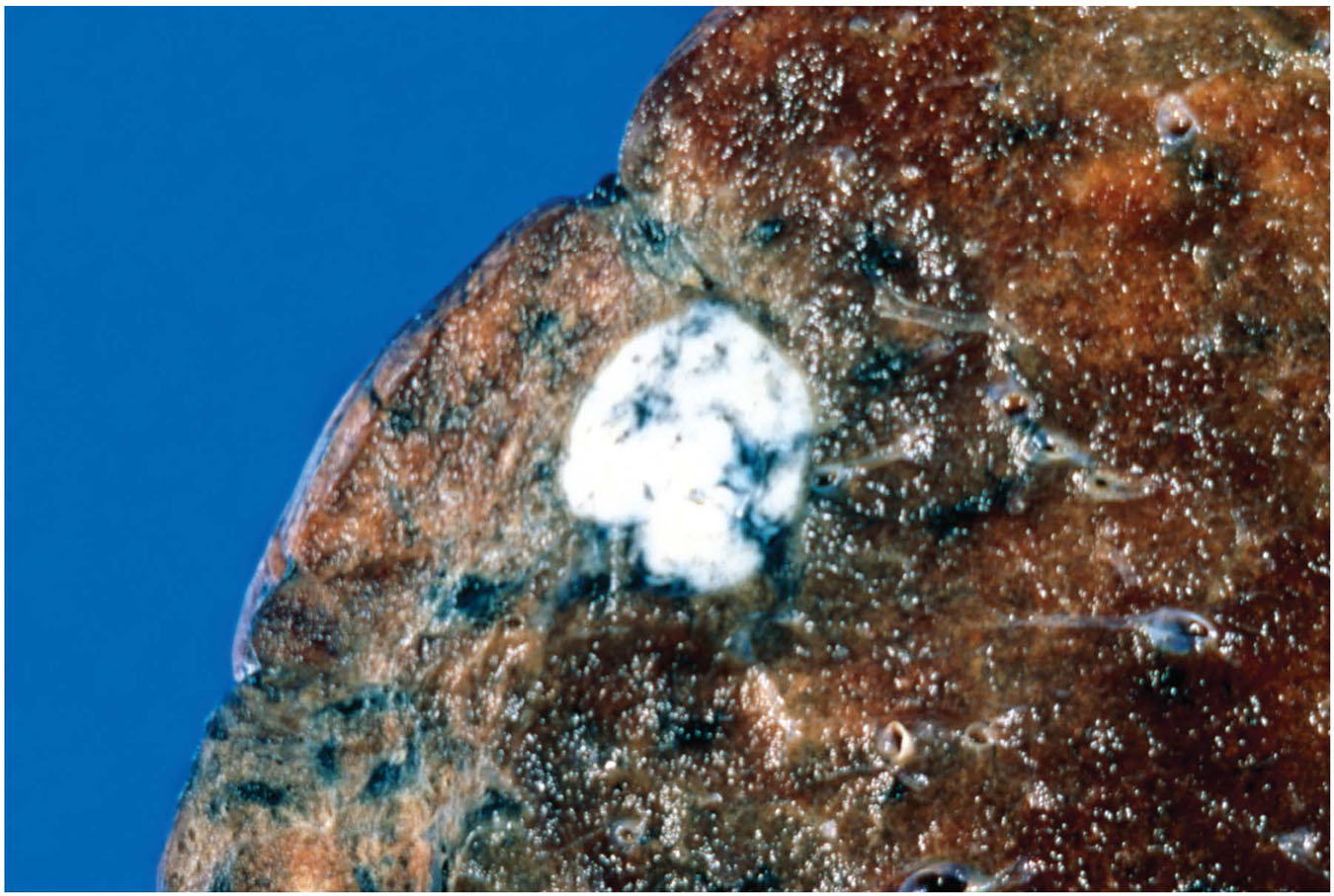
Plate 3 Pulmonary tubercle. Cross-section of lung showing a large, well defined tuberculous lesion. Wellcome Library, London.

Plate 4 Macrophage engulfing TB bacteria. Colored scanning electron micrograph (SEM) of a macrophage white blood cell engulfing a tuberculosis (Mycobacterium tuberculosis) bacterium (orange). Science Photo Library/Getty Images.

Plate 5 Laennec-type monaural stethoscope. Wellcome Library, London. Copyrighted work available under Creative Commons Attribution only licence CC BY 4.0 http://creativecommons.org/

Plate 6 Robert Carswell’s illustration of the tuberculous lung. Carswell, Pathological Anatomy, Path.a.32, Cambridge University Library.

Plate 7 Horace Walpole by Sir Joshua Reynolds, c.1756–1757. NPG 6520. © National Portrait Gallery, London.

Plate 8 Emily Brontë who perished from consumption in 1848. Emily Brontë by Patrick Branwell Brontë, NPG 1724, © National Portrait Gallery, London. (The sitter is in dispute and may actually be Anne who also perished from consumption in 1849.)

Plate 9 Skeleton in pink dress. “Miss Wagglebones-after 3 month’s sea-sickness.” © The British Library Board, John Brownrigg Belasis, WD 1478 page 74a. Pencil, watercolor, c13512-96.

Plate 10 Cupping set with scarifier. Science Museum A606733. Wellcome Library, London. Copyrighted work available under Creative Commons Attribution only licence CC BY 4.0 http://creativecommons.org/
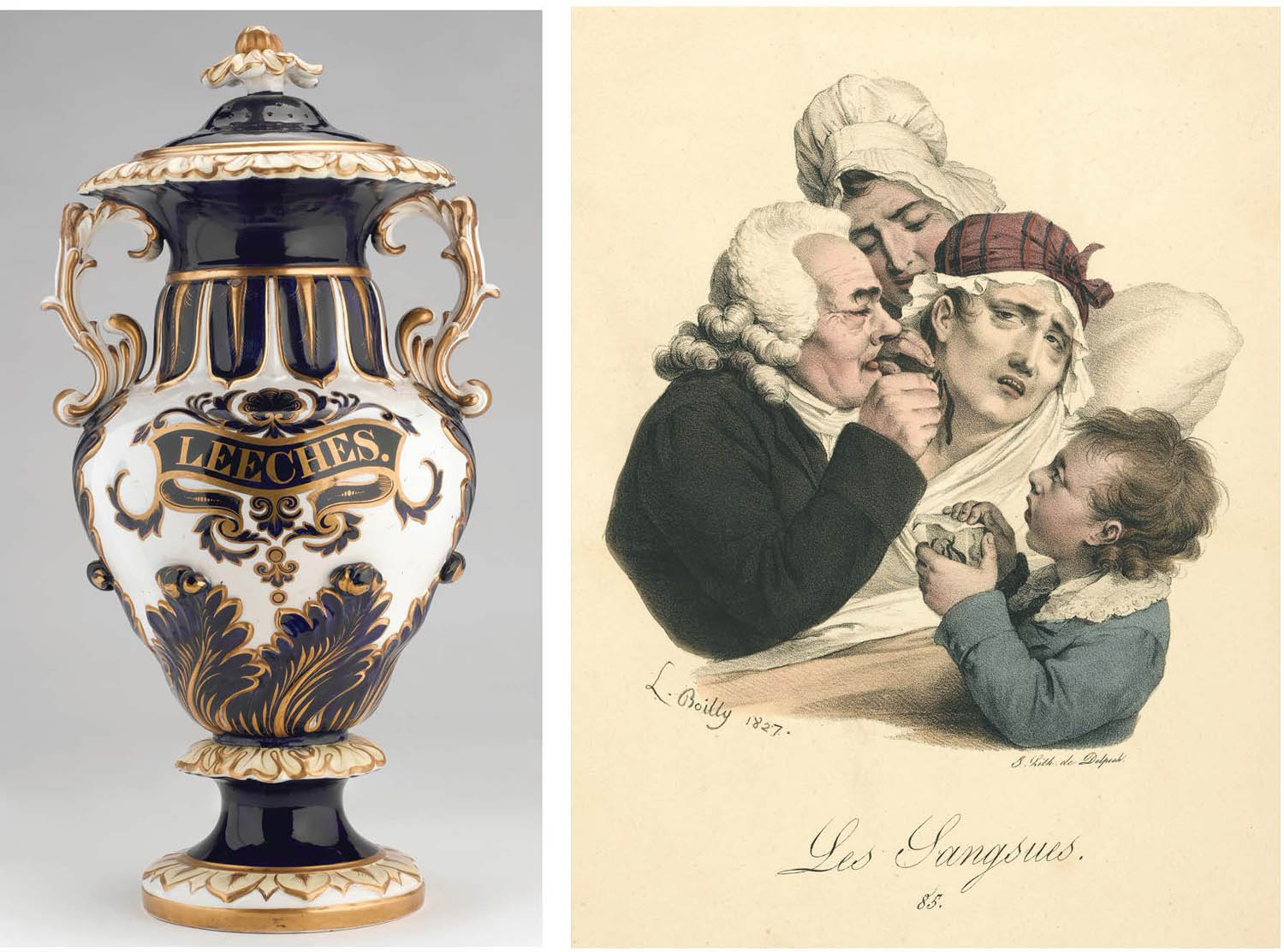
Plate 11 Leeches. Left: Pharmacy leech jar by Alcock at Hill Pottery, Burslem, England, 1831–1859. Science Museum A43107. Right: Louis Boilly after François Séraphin Delpech. A faint-looking woman is supported as the doctor carefully applies the leeches to her neck. (Paris:1827). Wellcome Library, London. Copyrighted work available under Creative Commons Attribution only licence CC BY 4.0 http://creativecommons.org/
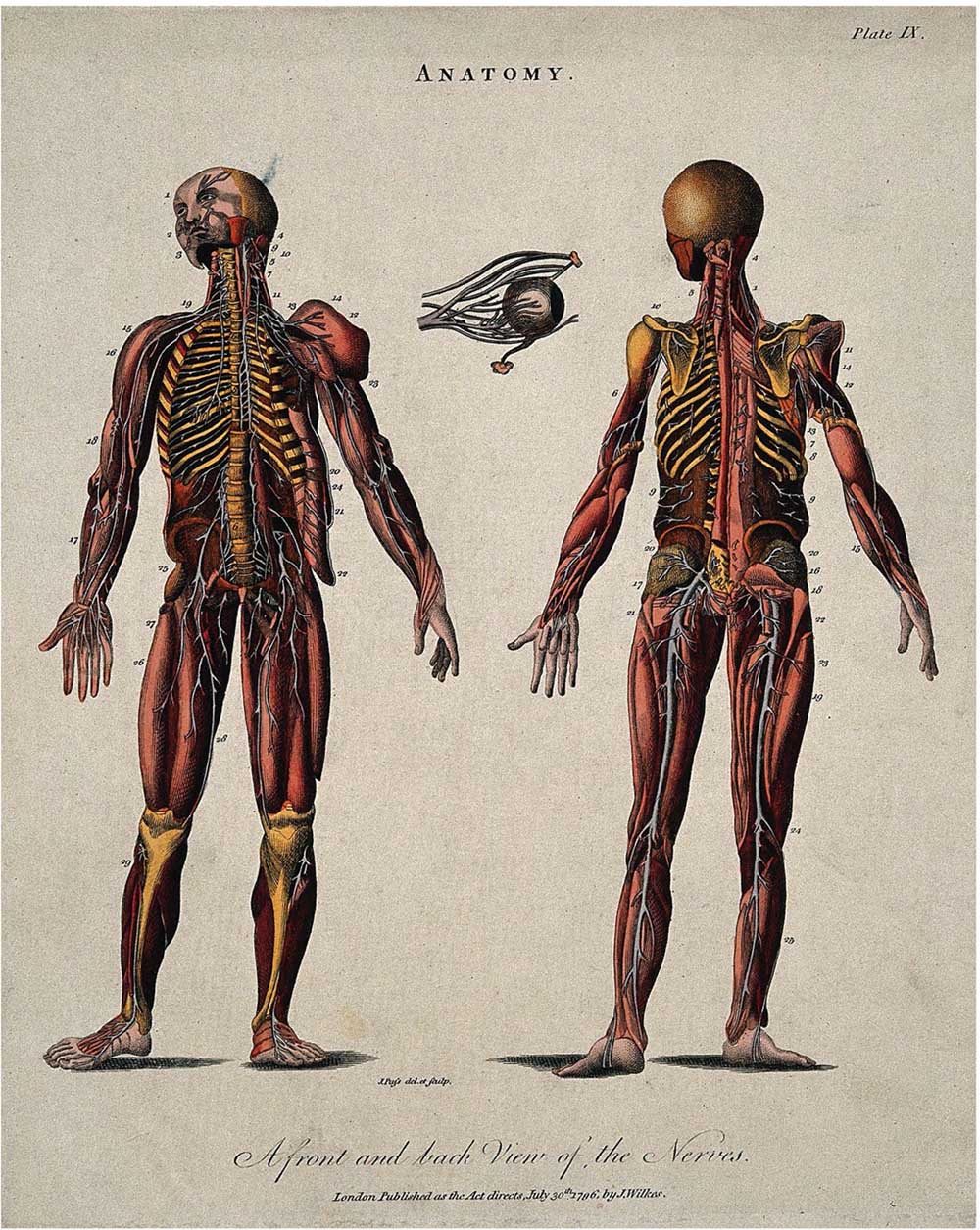
Plate 12 The eighteenth-century nervous system. Ecorché figures showing the nerves. Colored line engraving by J. Pass after W. Hewson, 1796. Wellcome Library, London. Copyrighted work available under Creative Commons Attribution only licence CC BY 4.0 http://creativecommons.org/
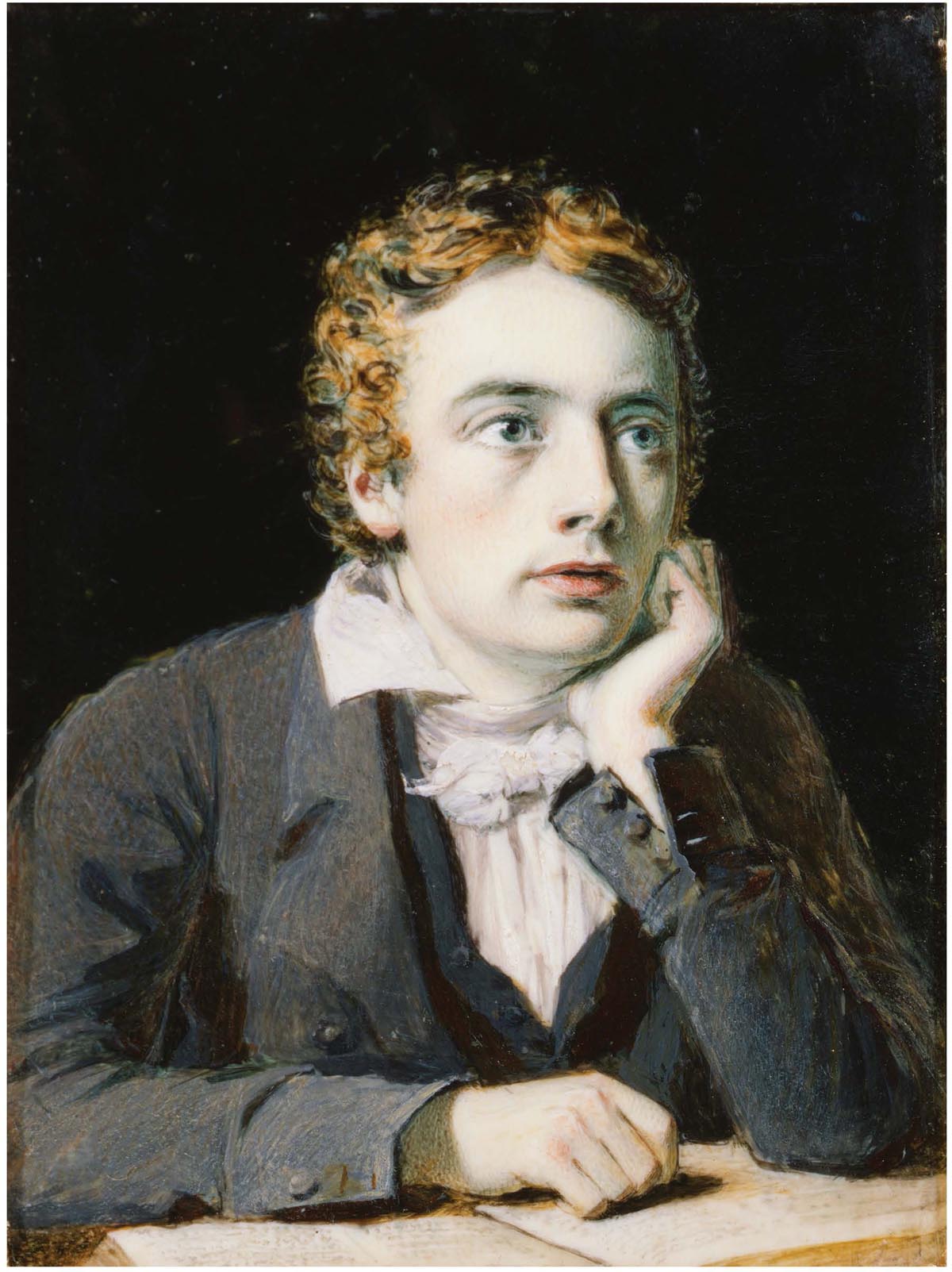
Plate 13 John Keats by Joseph Severn, 1819. © National Portrait Gallery, London.

Plate 14 Tom Keats, nineteenth century. Print Collector/Hulton Archive/Getty Images.

Plate 15 Wax anatomical Venus. Inspired by artistic positions, “Venuses” or female wax anatomical models demonstrated more than simple physical differences between men and women but also demonstrate the gendered perceptions of the period. Maker: Susini, Clemente, made in Florence, Italy (1771–1800). Science Museum A627043. Copyrighted work available under Creative Commons Attribution only licence CC BY 4.0 http://creativecommons.org/
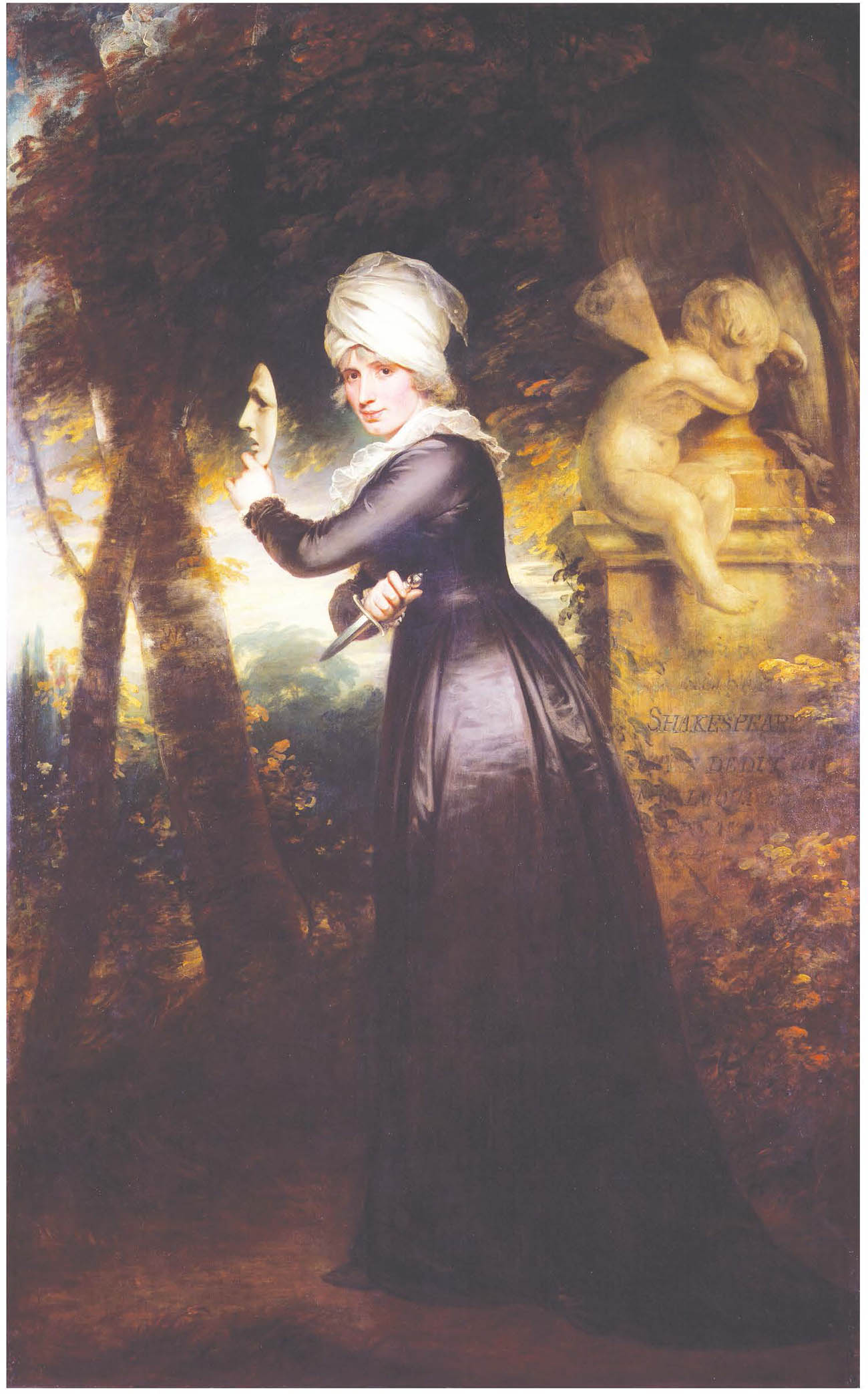
Plate 16 “Mrs Siddons with the Emblems of Tragedy.” Sarah Siddons by Sir William Beechey, oil on canvas, 1793. NPG 5159. © National Portrait Gallery, London.

Plate 17 Portrait of Sally Siddons by Sir Thomas Lawrence, c.1795. Private Collection. Fine Art Images/Heritage Images/Getty Images.
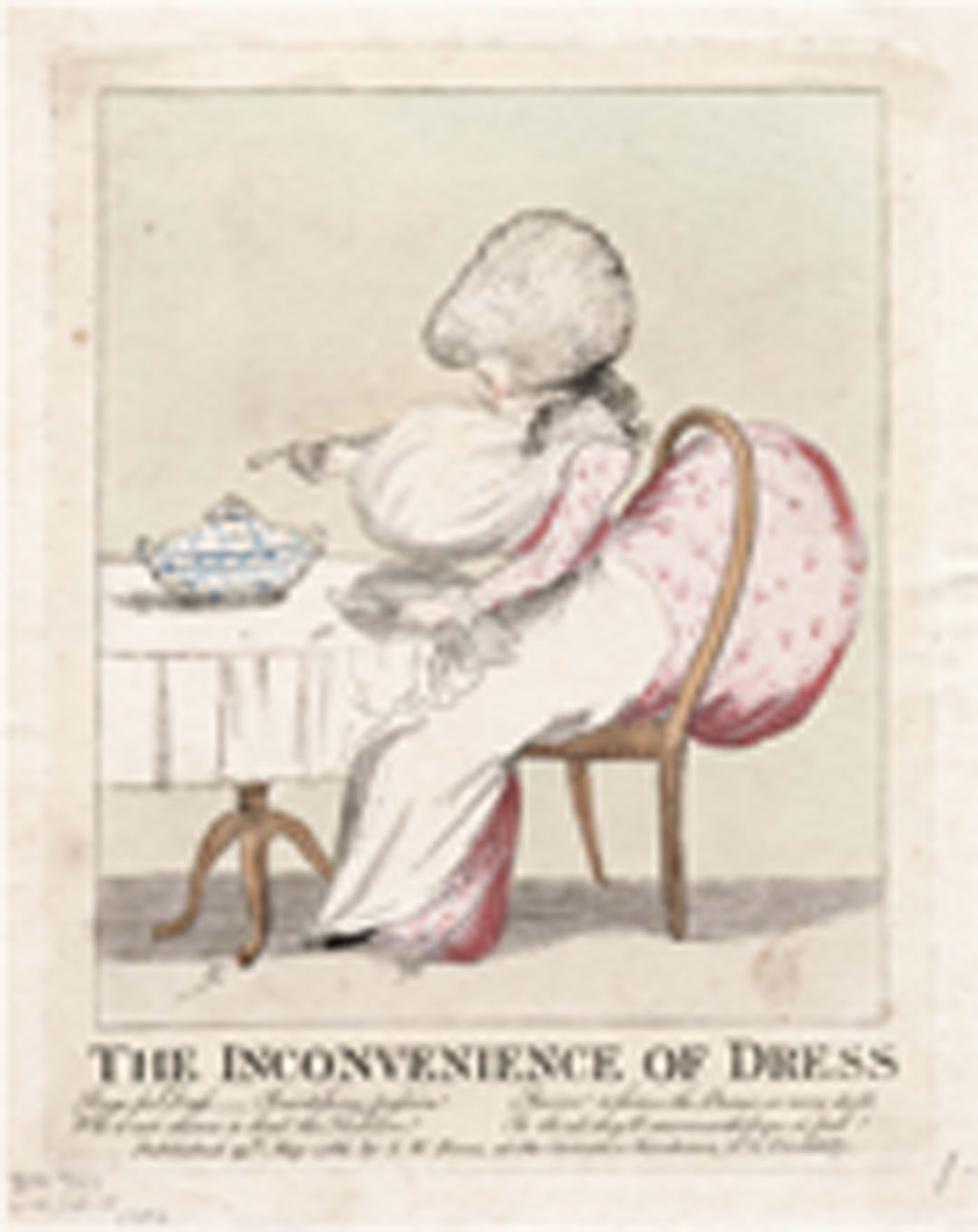
Plate 18 Caricaturizing the pigeon-breasted fashions. George Townly Stubbs, The Inconvenience of Dress (London: S.W. Fores, 1786). Image number: lwlpr05984. Courtesy of The Lewis Walpole Library, Yale University.
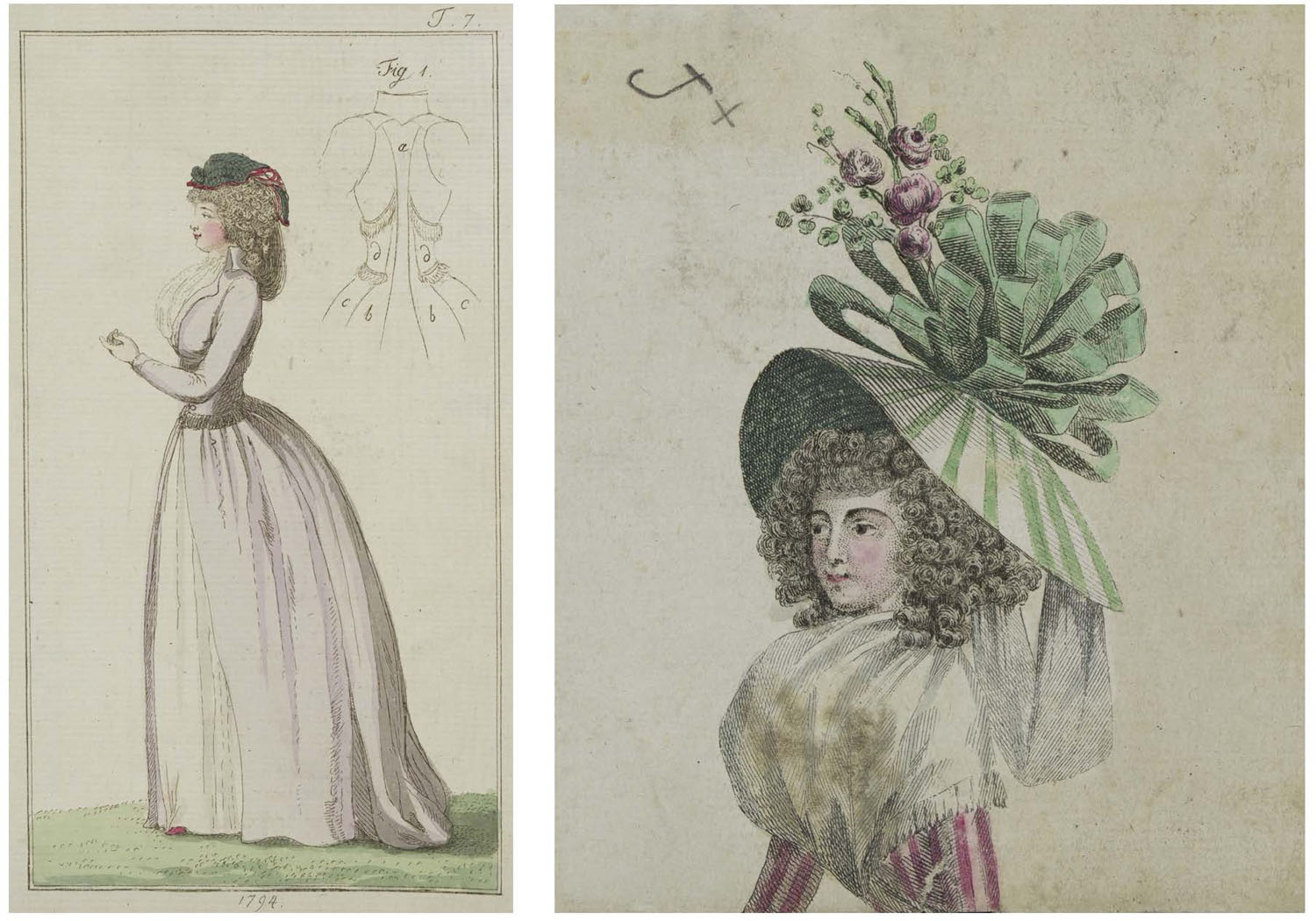
Plate 19 1790s fashions. Left: Hand-colored engraving, France, 1794. Right: Hand-colored engraving showing a woman wearing an elaborate hat and hairstyle. France c.1790. Museum number: E.21620-1957. © Victoria and Albert Museum.

Plate 20 Windows of the Soul. Fashion Plate from The New Monthly Belle Assemblée, Vol. XXIV (London: Joseph Rogerson, 1846). Image provided by Louisiana State University Special Collections.
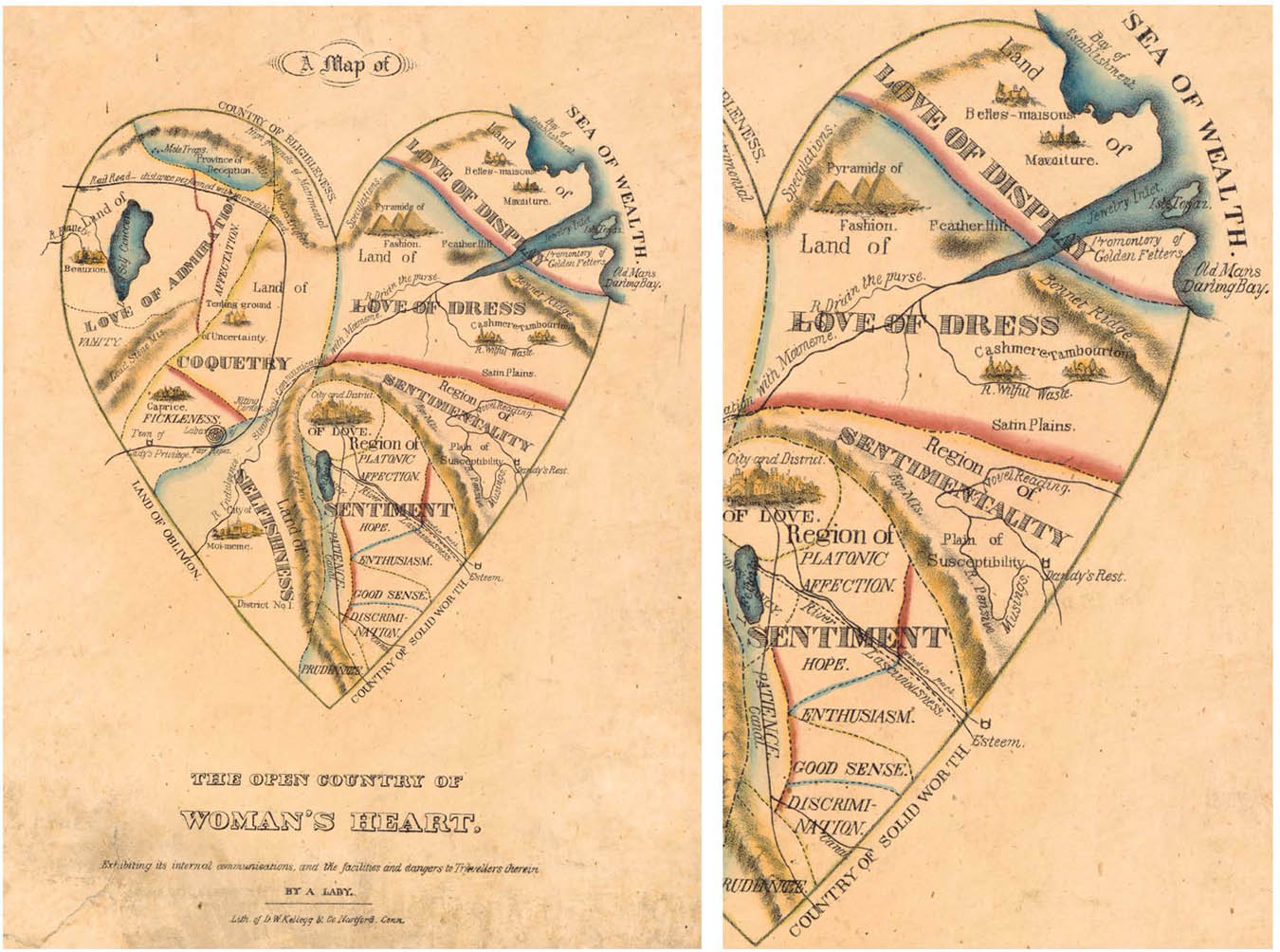
Plate 21 A map of the open country of woman’s heart exhibiting its internal communications, and the facilities and dangers to travellers therein. By a lady. (Hartford: Lith. of D. W. Kellogg & Co. Hartford, Conn., between 1833 and 1842), Courtesy, American Antiquarian Society.
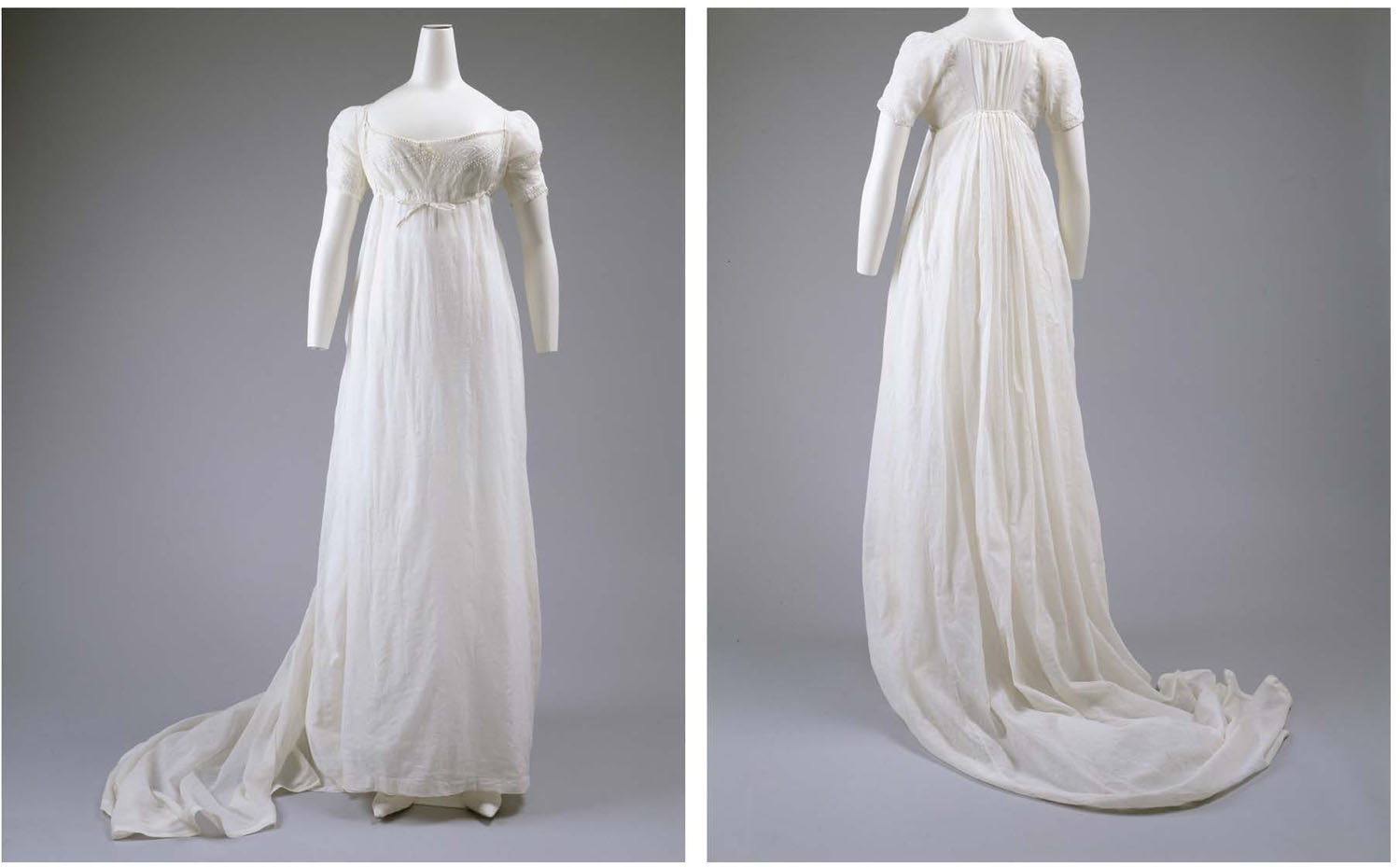
Plate 22 English example of neoclassical dress with train (front and back), c.1803. Accession number: 1983.401.1. Courtesy of the Metropolitan Museum of Art, New York.

Plate 23 Fashion plate illustrating the highlighting of the décolletage and posterior furrow. “Evening Full Dress 1810,” La Belle Assemblée, Vol. I (London: J. Bell, 1810.) Casey Fashion Plates, Los Angeles Public Library.
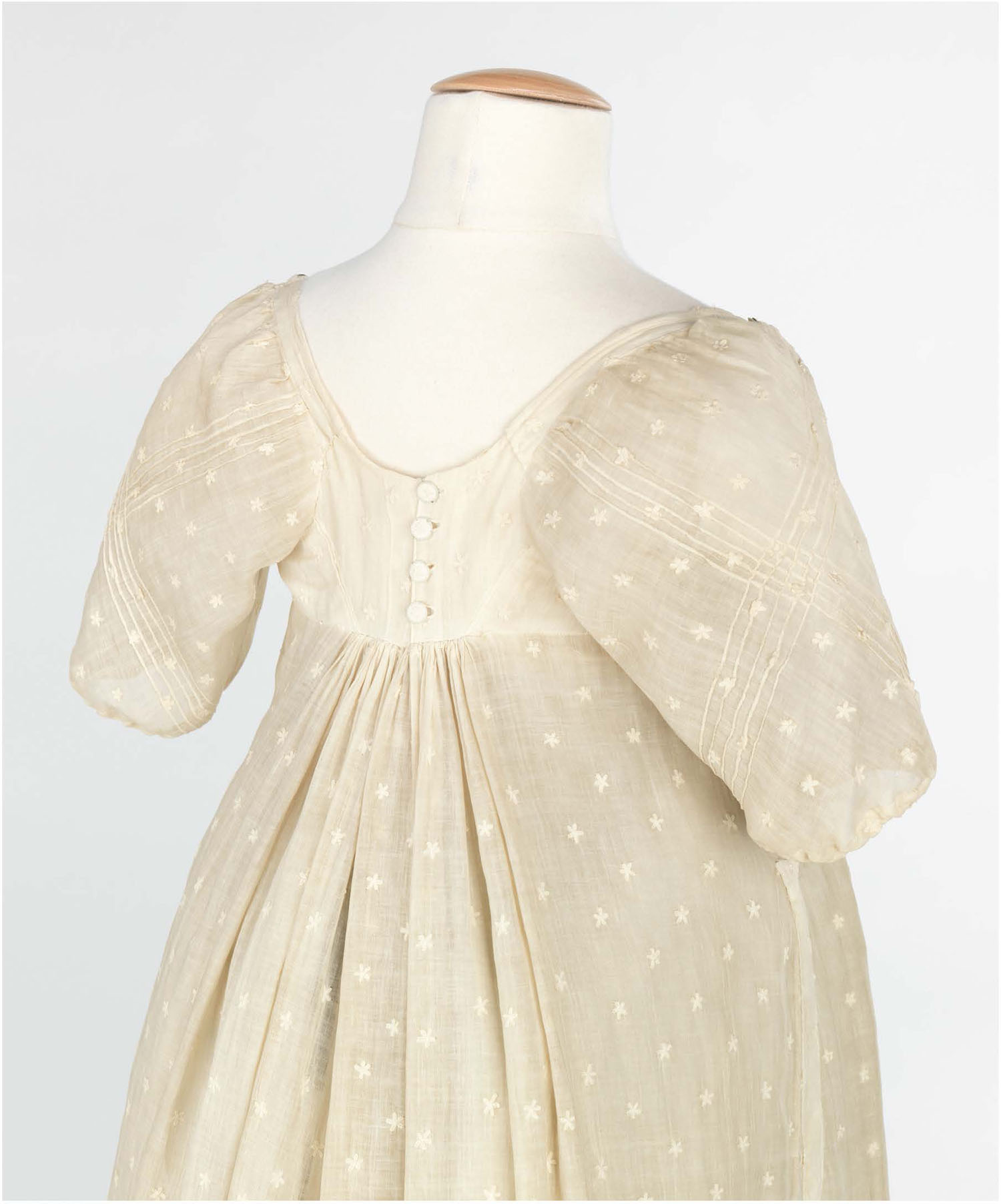
Plate 24 Dress (1809) illustrating the low back that would have showcased the backbones. Evening Dress 1809 (French). Accession number: 2009.300.1806. Brooklyn Museum Costume Collection at The Metropolitan Museum of Art, Gift of the Brooklyn Museum, 2009; Gift of Theodora Wilbour, 1947.

Plate 25 Short diaphragm-length pair of stays c.1790. Stays, Britain, 1795–1805. Cotton, linen, whalebone (baleen), trimmed with silk ribbon. Museum number: T.237-1983. © Victoria and Albert Museum, London.
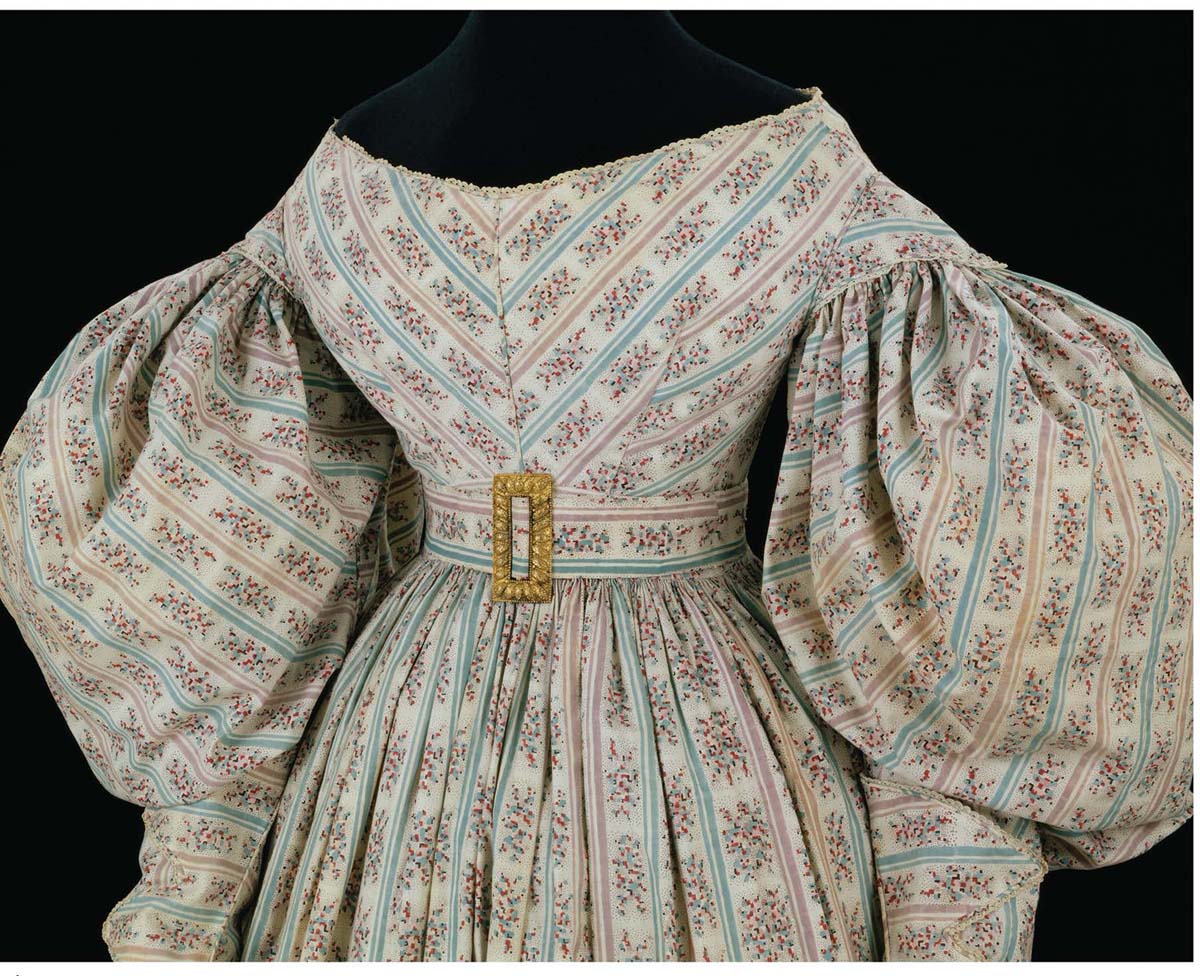
Plate 26 Day Dress (c.1830–1834) with exaggerated gigot sleeves and proportionately smaller waist that led to women being compared to “wasps,” “bottle spiders,” or “ants”. Example of a day dress (c.1830–1834), British. Museum number: T.168&A-1915. © Victoria and Albert Museum, London.
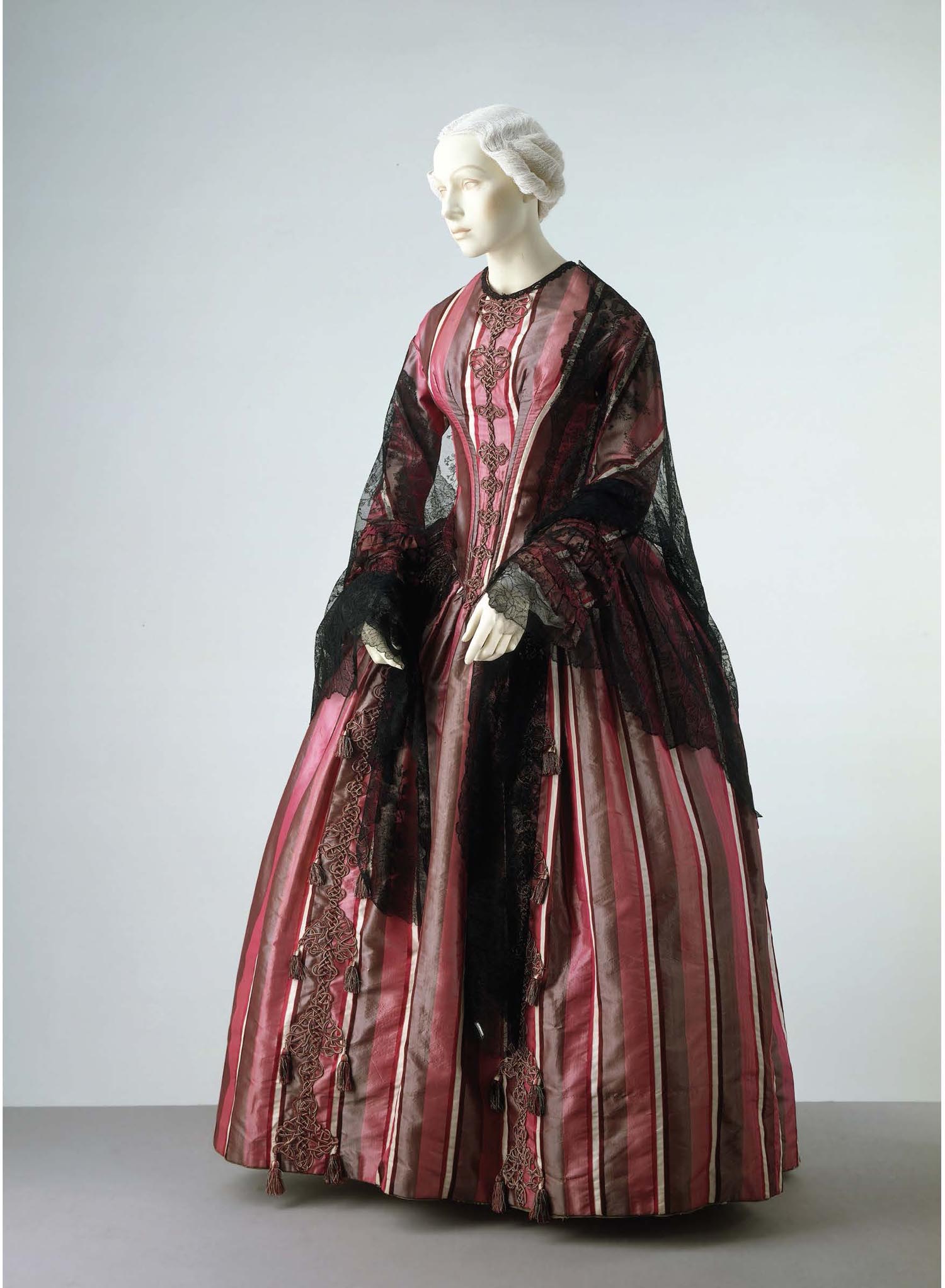
Plate 27 Example of Sentimental Dress (1840s). Dress of British origin (c.1845–1850). Museum number: T.856-1919. © Victoria and Albert Museum, London.
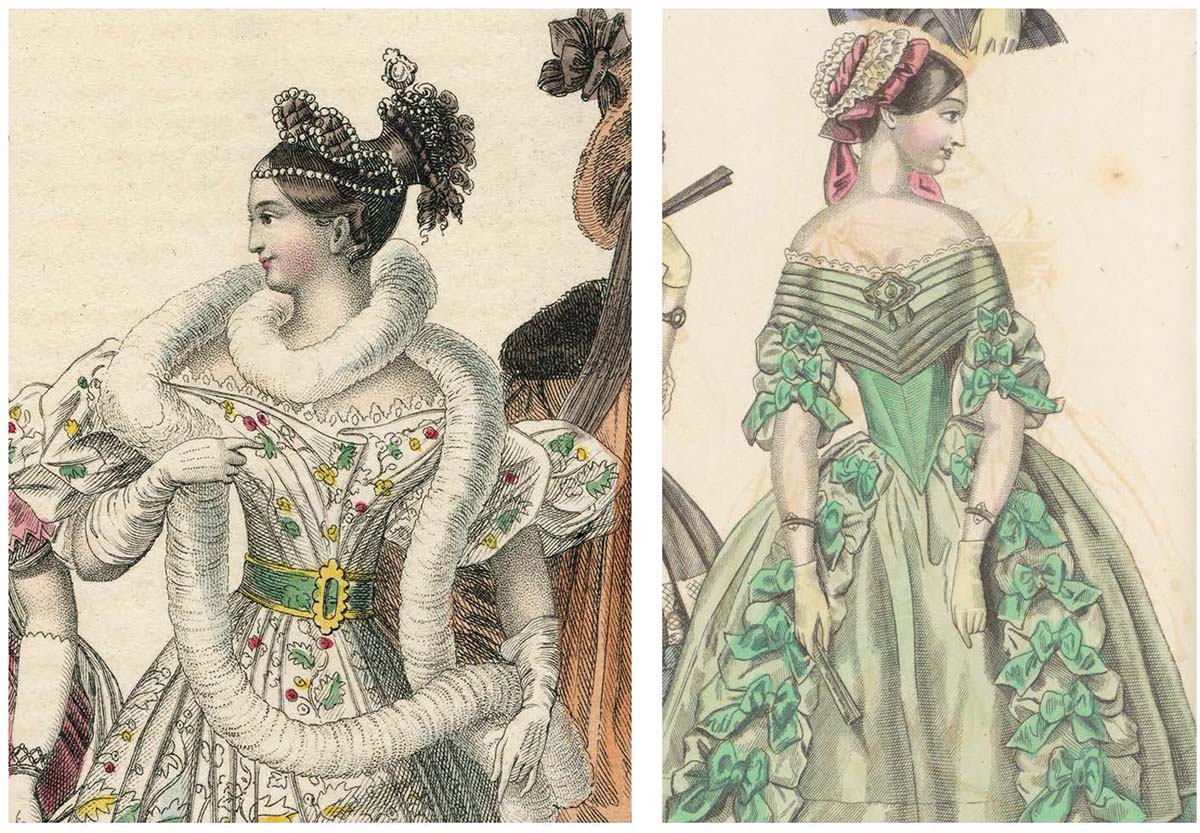
Plate 28 Romantic and Sentimental decoration for Evening Dress. Left: Romantic Dress, La Belle Assemblée, Vol. XV (London: Edward Bull, 1832), Casey Fashion Plates, Los Angeles Public Library. Right: Sentimental Dress, The World of Fashion, Monthly Magazine of the Courts of London and Paris, Vol. XXV, No. 286 (London, 1848). Cambridge University Library.
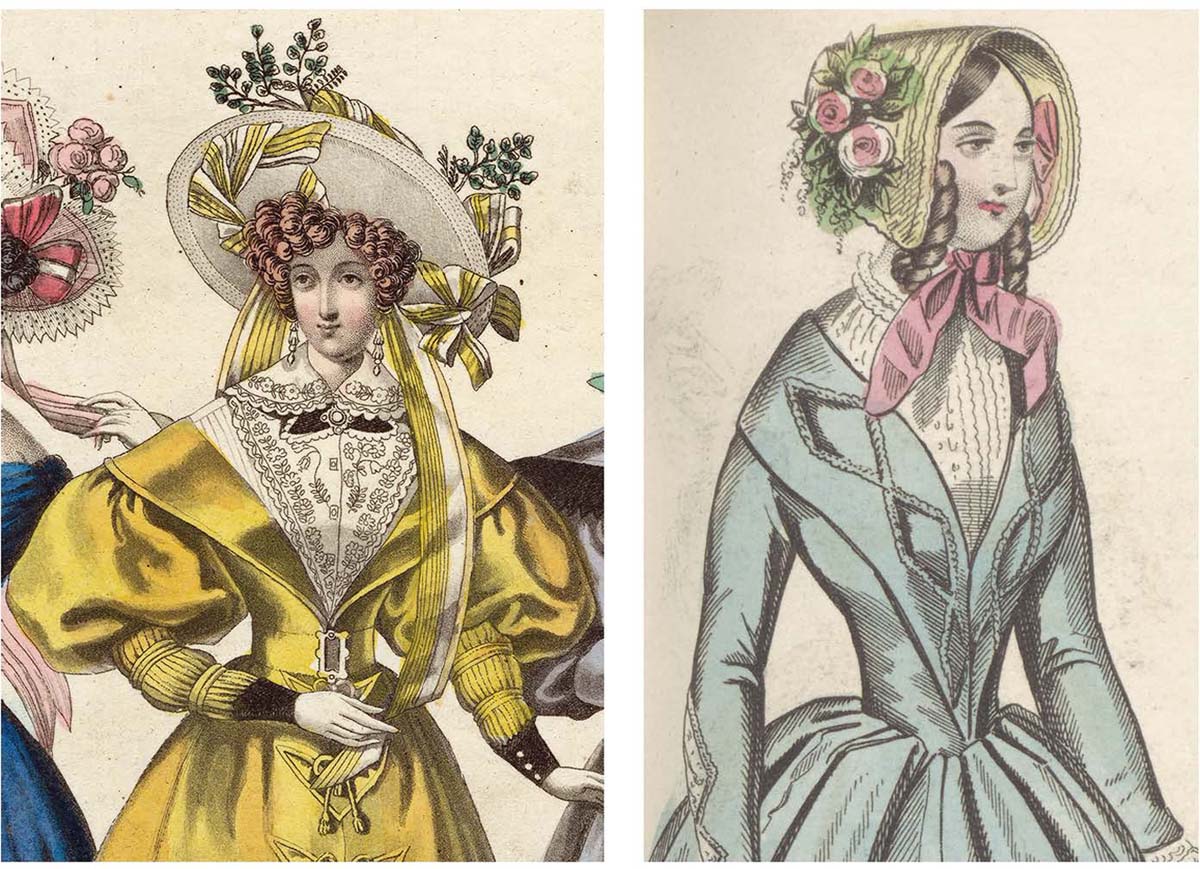
Plate 29 Romantic and Sentimental decoration for Day Wear. Left: Romantic Dress, La Belle Assemblée, Vol. XI (London: Whittaker, Treacher, and Co., 1830), Casey Fashion Plates, Los Angeles Public Library. Right: Sentimental Dress, The New Monthly Belle Assemblée, Vol. XXIII (London: Published at Norfolk Street, 1845). Cambridge University Library.
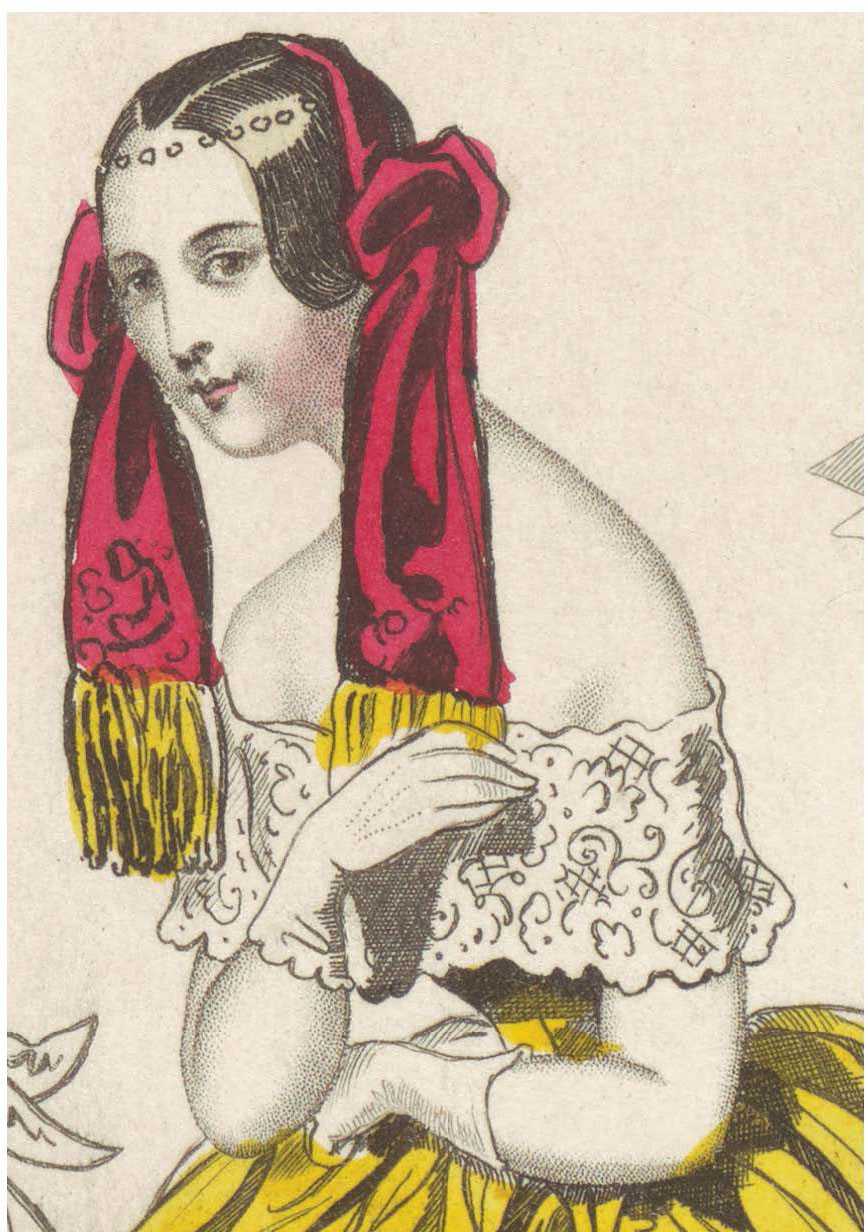
Plate 30 Stooping posture reminiscent of consumption. The Magazine of the Beau Monde, Vol. 11 (London: 1842), Cambridge University Library.
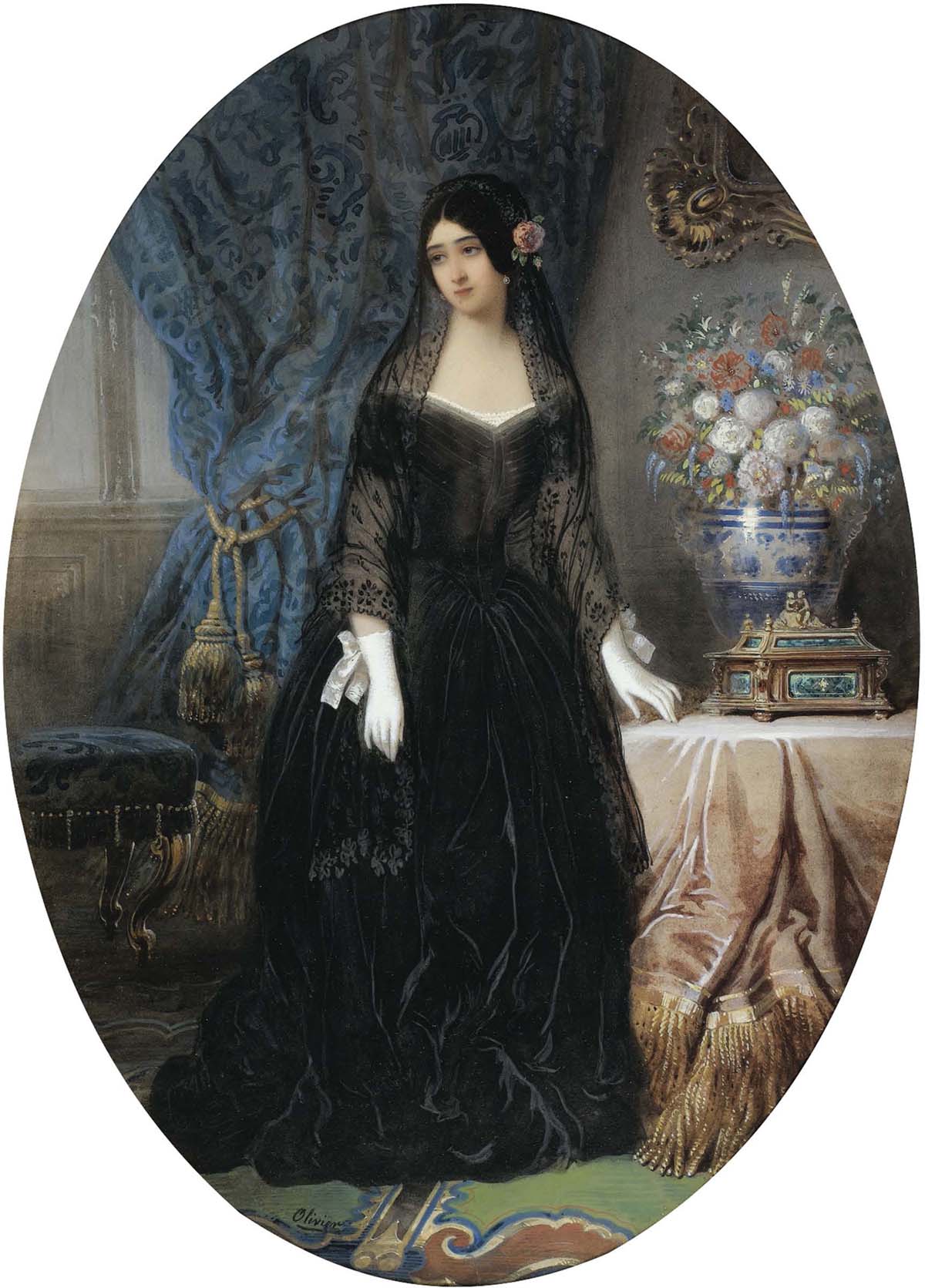
Plate 31 Marie Duplessis. Jean-Charles Olivier, Portrait of Marie Duplessis (1824–1847), La Dame aux Camélias, c.1840. Photo by Fine Art Images/Heritage Images/Getty Images.

Plate 32 Dress (c.1853–1862). Example of a dress, of British origin, demonstrating move away from elongated tubercular shape, emulative of consumption, and towards a more robust frame (c.1853–1862). Museum number: T.90&A-1964. © Victoria and Albert Museum, London.
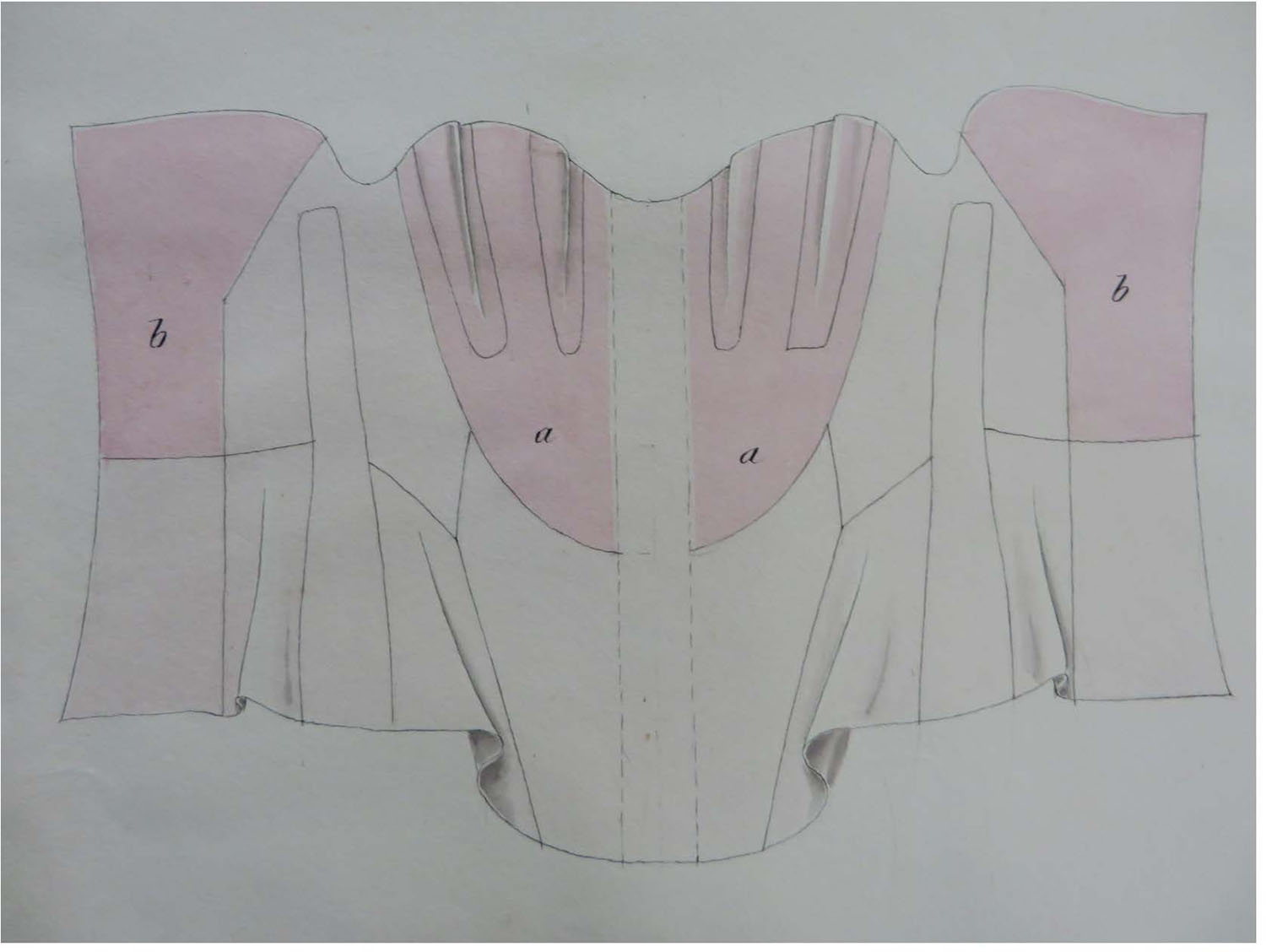
Plate 33 “Hygean or Corporiform Corset,” Patented by Roxy Caplin’s husband Jean Francois Isidore Caplin (1849). The dark pink sections, which focused on the lungs, were intended to be “readily adapted to the natural form of the body.” “Hygean or Corporiform Corset,” Jean Francois Isidore Caplin, Useful Registered Design Number: 1995, August 15, 1849. Courtesy of the National Archives, UK.

Plate 34 Front and back views of a new style of “Reformed” corset. Blue ribbed silk corset, made by Roxy Anne Caplin, which may have been the display model exhibited at the Great Exhibition in 1851. Corset, c.1851. Photo by Museum of London/Heritage Images/Getty Images.